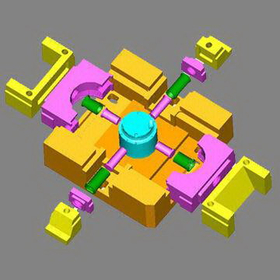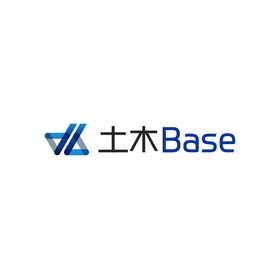On-demand "Quality Improvement Techniques" video distribution service for engineers.
We have launched an on-demand video streaming service. We will gradually open free streaming services and paid membership streaming services.
Overview of On-Demand Distribution - Management Innovation in Manufacturing (DX) - Improvement of Management Quality - Human Resource Development in Manufacturing - Basics of FMEA/DRBFM/FTA - How to Promote Improvement Activities in Manufacturing - Fundamentals of Quality Control in Manufacturing We offer a wide range of content for newcomers, mid-level employees, and managers in the manufacturing industry.
Inquire About This Product
basic information
At our research institute, we propose quality improvement methods and tools that can be immediately used in frontline operations. ★ Contents of Quality Improvement Support Services 1. "Free: Manufacturing Network Consultation" Completely free service https://mailform.mface.jp/frms/bintian/8s3ieuzwsa8f 2. Information on Online Training for Young Engineers to Level Up http://factorysupport-takasaki.com/article/416480897.html 3. Implementation of In-House Training for Young Employees with On-Demand Text Distribution http://factorysupport-takasaki.com/article/461790700.html 4. Learning from Past Countermeasure Examples with Electronic Data Teaching Materials http://factorysupport-takasaki.com/article/424984376.html 5. Free Services (Newsletter, Form Templates, Email Courses, etc.) http://factorysupport-takasaki.com/category/26560063-1.html
Price range
Delivery Time
Applications/Examples of results
Please use it as a recurrent education and corporate training text, as well as for self-study.
Detailed information
-

Quality management has traditionally focused on conducting final inspections to prevent defective products from reaching the market. However, simply rejecting defective products can lead to increased costs due to waste and rework. Nowadays, the fundamental principle is to "build quality into the process," aiming to manage upstream processes through preventive activities to avoid defects in the manufacturing site, and to pursue continuous improvement.
-

The background of the focus on human error can be attributed to the expansion of activity ranges due to technological advancements and the possibility of receiving more advanced services. Additionally, even with measures taken through automation and unmanned operations, the setting up and use of machines ultimately relies on humans. In factories, mistakes can be categorized into those that cannot be prevented by human attention alone and those that can be prevented through education and training. The challenge lies in how to prevent these mistakes.
-

The "5 Whys" analysis is primarily a tool for exploring and narrowing down the causes of problems that have occurred. However, it does not always lead to the true root cause, and measures to prevent recurrence are often insufficient. To reach the cause through repeated questioning, it is necessary to understand the fundamentals of quality management. To conduct a proper analysis, one must: - Accurately recognize the problem that has occurred (the principle of "three actuals") - Conduct "5 Whys" based on the purpose of what needs to be resolved - Point out deficiencies based on the mechanisms of quality management - Investigate the causes from both sides of "why did it occur" and "why could it not be prevented" to solve the problem This course will point out the current state and issues of "5 Whys" analysis and thoroughly explain the basic form of the "5 Whys" analysis procedure and its application methods for specific purposes to ensure effective implementation of recurrence prevention and horizontal deployment.
-

What challenges are factories facing that are troubled by quality issues, such as inspection-approved products leading to complaints in the market or defects being discovered by customers? With strict quality demands and a development environment characterized by small quantities and short delivery times, traditional quality management methods are proving inadequate for preventing the outflow of quality issues, raising concerns about potential quality problems. Therefore, this course will focus on new approaches to quality management that are suitable for the times, explaining the concepts of preventive measures against latent defects and the procedures for implementing FMEA.
-

In the production factory, it is necessary to conduct risk identification and assessment at the product design stage and the manufacturing process design stage, in order to prevent unexpected defects from occurring after distribution and to implement measures to reduce risks to a socially acceptable level. When conducting process FMEA, it is essential to understand the concepts of reliability design in manufacturing processes, as well as the anticipation and prevention of risks. This course aims to understand the procedures of assessment methods suited to its objectives, such as: - Building reliability and safety into manufacturing process design (preventive measures) - Risk assessment (evaluating the magnitude of risks) - FMEA (listing and addressing all potential unexpected defects at the design stage).
-

To add value to products through production activities, companies must manufacture according to customer requirements and design specifications, providing the intended products and services. They should achieve the desired QCD using the five M elements, and ultimately generate profits. To make a profit, it is necessary to increase value-added productivity (throughput). Value-added refers to the portion remaining from sales revenue after excluding external purchase costs (the value added within the factory). How can we increase this value-added? - Develop products that can be sold at a high price. - Purchase materials and parts from outside at a lower cost. - Reduce waste of materials through on-site improvements. - Create attractive products and increase the selling price of the products themselves. However, above all, an important point that companies must immediately address is "improving productivity." Improving productivity means that each individual increases the production value per unit of time. Therefore, it is necessary to advance on-site improvements based on a correct understanding of productivity enhancement.
-

As you are aware, QC circle activities face various issues. Currently, there is no time to engage in the traditional improvement activities that have been carried out. I propose dividing improvement activities into three levels: Level 1: Solving problems that arise in daily operations... the traditional form of activity Level 2: Solving QCD issues that span across organizations Level 3: Business reform based on medium- to long-term company policies Traditionally, only Level 1 activities were considered part of QC circle activities. If Levels 2 and 3 activities are not implemented simultaneously, the factory's performance will not improve. Therefore, in this course, we will consider how to promote improvement activities in small and medium-sized enterprises that are suited to the times.
-

How should Japan's order-based small and medium-sized manufacturing industry advance its digital transformation (DX)? Recently, due to globalization and resulting price competition, Japan's small and medium-sized manufacturing sector has been in a declining trend. In the Japanese market, where market expansion is not expected, sales from parts processing and assembly have plateaued, and there is strong pressure from major companies that place orders to reduce costs, leading to a shrinking profit margin year by year. However, there are also strengths unique to small and medium-sized enterprises. The ability to respond to diverse, small-lot production and the excellent proprietary manufacturing technologies possessed by skilled workers are among these strengths. It is essential to transform the business into a proposal-based contract manufacturing service industry by leveraging these advantages. To achieve this, it is necessary to further refine proprietary manufacturing technologies to meet market needs and focus on proactive IT investments to acquire new customers. This requires breaking away from the traditional subcontracting mentality and old ways of thinking, and implementing transformations in organization, personnel, and systems. This course will present two directions for the DX of small and medium-sized manufacturing industries and explain how to promote reform.
catalog(3)
Download All Catalogs

News about this product(2)
Company information
■Company Name: Takasaki Swift Technology Solutions Co., Ltd. ■Established: March 1, 2014 ■Company Incorporation: August 15, 2017 ■Representative: Representative Employee Kanou Hamada ■Capital: 2 million yen ■Sales: 20 million yen ■Main Business: Manufacturing Technology Consulting (Quality Improvement/Productivity Enhancement) ● Subsidy Application Support (Restructuring Subsidy, Overseas Supply Chain Resilience Subsidy, etc.) ● Contract Design and Manufacturing of Molds, etc. (Prototype Molds, Parts Machining, Glossy Coating, etc.) ● Manuals and DVD Series for Immediate Use on Site (On-site Handbooks, Self-Learning, Employee Training Texts) ● Seminars (For Young and Mid-Career Employees / For Managers) ● Quality Improvement Support (Quality Improvement, New Product Launch, Contract Manufacturing)













